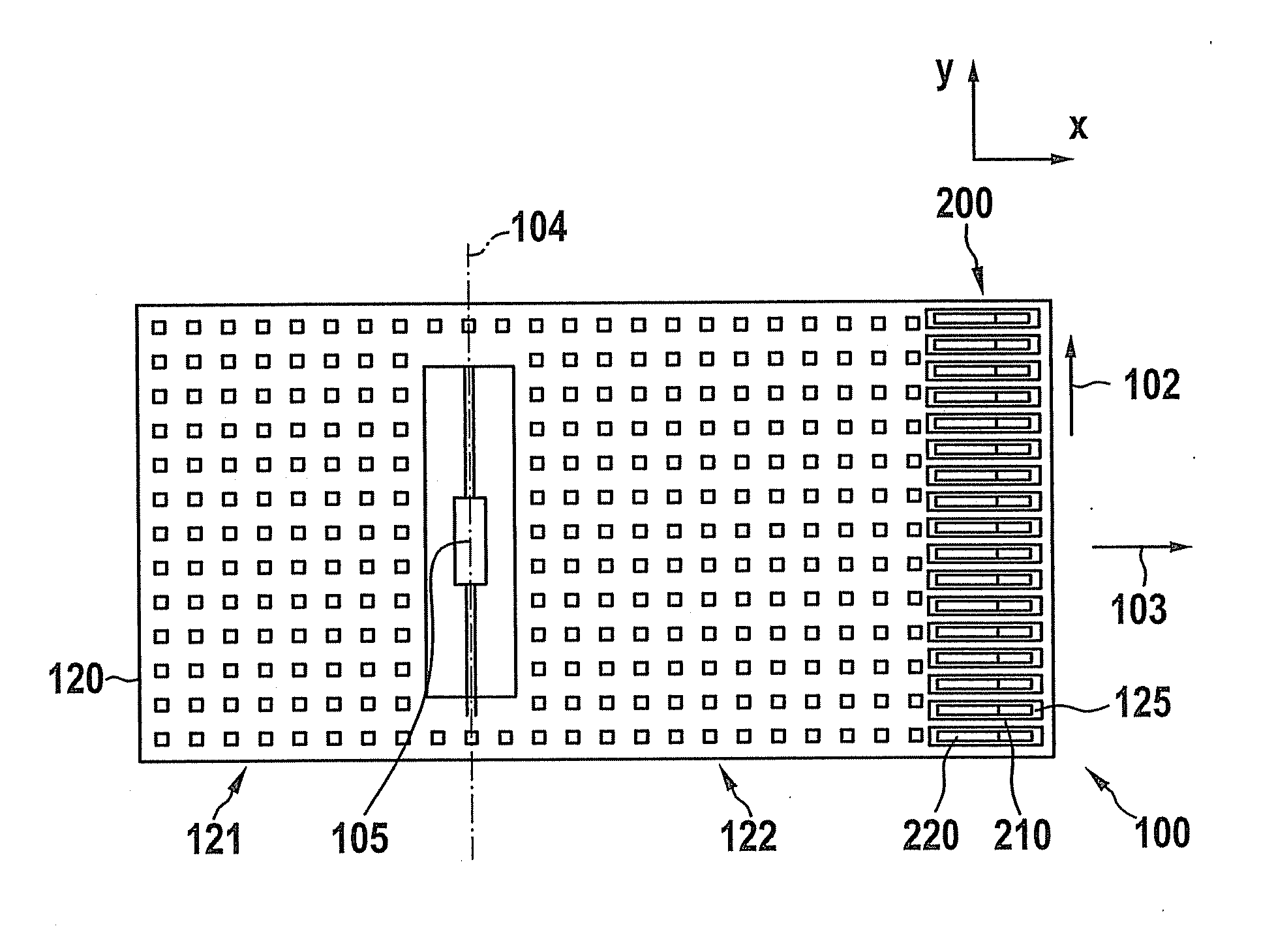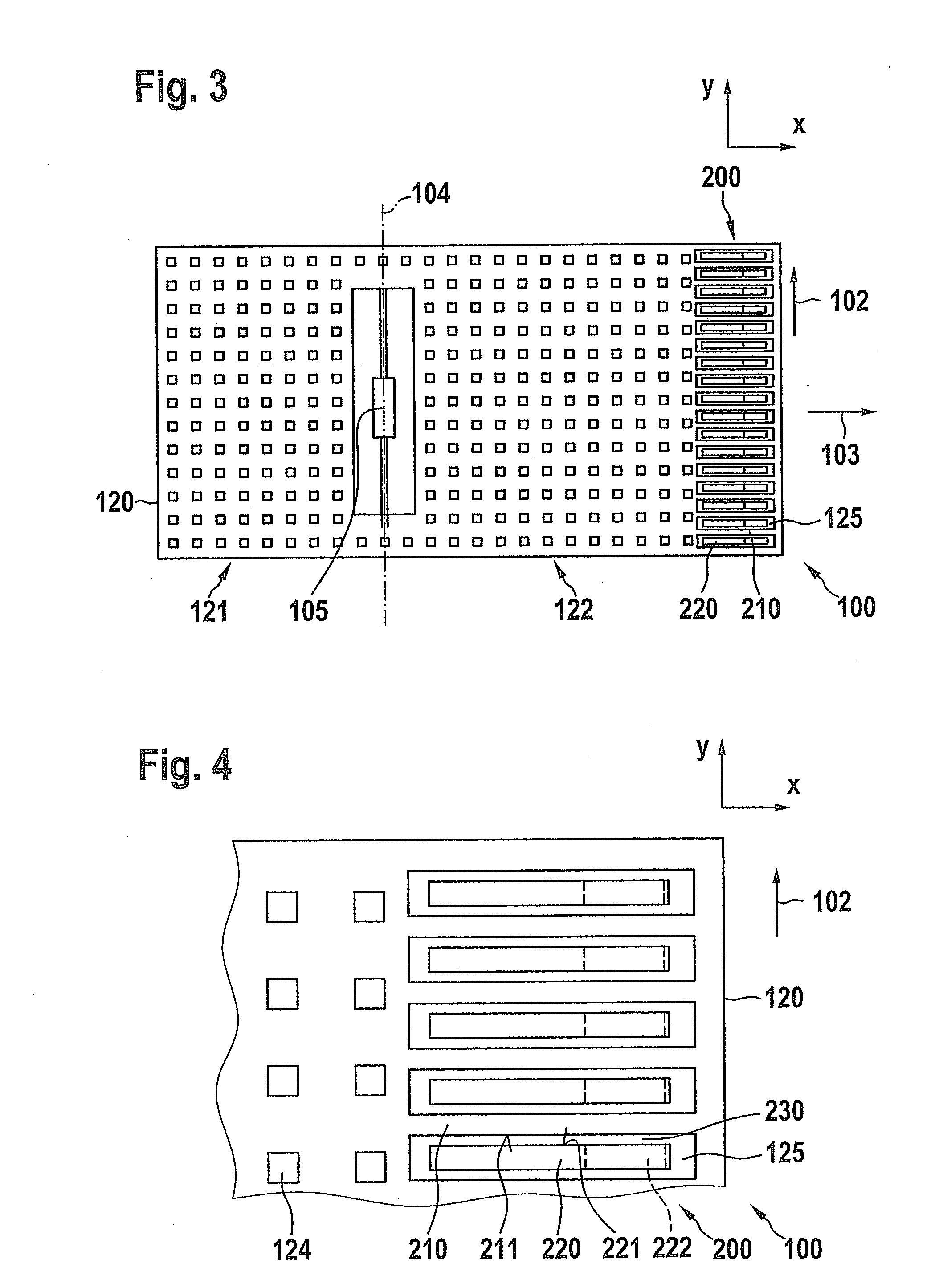Acceleration sensor having a damping device
a technology of acceleration sensor and damping device, which is applied in the direction of speed/acceleration/shock measurement, measurement device, instruments, etc., can solve the problems of interference signals, unusable vibration of the sensor mass in this plane, and rocker striking, etc., and achieve the effect of facilitating interference due to acceleration perpendicular
- Summary
- Abstract
- Description
- Claims
- Application Information
AI Technical Summary
Benefits of technology
Problems solved by technology
Method used
Image
Examples
Embodiment Construction
[0029]FIGS. 1 and 2 show a typical z acceleration sensor having the so-called “rocker design.” Micromechanical sensor 100 illustrated in a top view in FIG. 1 is composed of a plate-shaped body 120 which is used as a seismic mass and which is deflectably suspended in a rocker-like manner with respect to a subjacent substrate 110 with the aid of an elastic suspension 140. Seismic mass 120 may be connected, for example, via two torsion springs 141, 142 to a central support structure 130 which is used as a suspension point for torsion springs 141, 142. The suspension of seismic mass 120 is selected in such a way that an additional mass 123 results on a rocker side 122 which causes a torque, and therefore a deflection a of rocker 120 from its neutral / zero position, when the sensor structure is accelerated perpendicular to the substrate plane. In the present example, the motion of rocker 120 is capacitively evaluated with the aid of two detection electrodes 151, 161, situated on either si...
PUM
 Login to View More
Login to View More Abstract
Description
Claims
Application Information
 Login to View More
Login to View More - R&D
- Intellectual Property
- Life Sciences
- Materials
- Tech Scout
- Unparalleled Data Quality
- Higher Quality Content
- 60% Fewer Hallucinations
Browse by: Latest US Patents, China's latest patents, Technical Efficacy Thesaurus, Application Domain, Technology Topic, Popular Technical Reports.
© 2025 PatSnap. All rights reserved.Legal|Privacy policy|Modern Slavery Act Transparency Statement|Sitemap|About US| Contact US: help@patsnap.com



